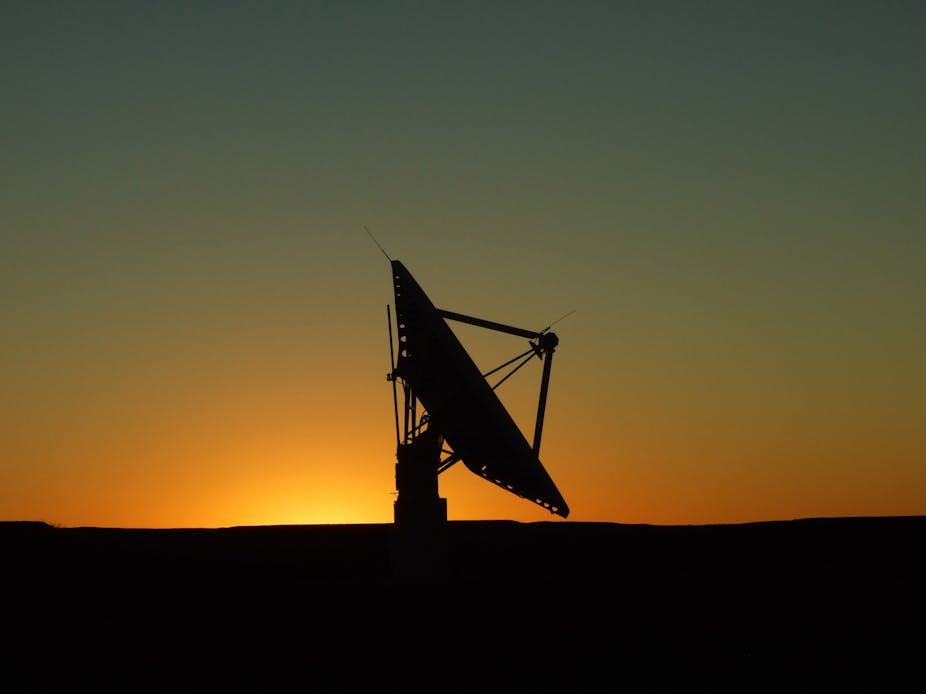The Square Kilometre Array (SKA) is a concept that’s been slowly growing and evolving since 1991. But last night (AEST) this ambitious project took a giant leap towards reality with the announcement of a SKA site decision.
The decision was a complex one, and one which recognised the enormous amount of international investment needed to make the SKA happen: the array will be split between Africa and Australia/New Zealand.
What this does not mean is that half the telescope will be built on each continent. Each site will get a full square kilometre of collecting area, with the full scientific functionality originally envisaged.
However, the SKA’s science goals require a facility that can tune into radio waves ranging from 70 MHz to more than 10,000 MHz. It’s impossible for any single technology to cover this vast range, so the plan has always been to build two or even three different types of antennas which, together, can span the full range needed.
What the SKA board has decided is to put different technologies in different places, playing to the strengths of each site.
The lowest frequency component, consisting of antennas that do not move or steer and that can collect signals from the whole sky at once, will be built in Australia and New Zealand.
This capitalises on the superb “radio quietness” of the SKA core planned for Murchison in outback Western Australia - one of the few places on the planet that isn’t polluted by FM radio and other artificial signals in this low-frequency band.
The higher-frequency technology, consisting of more traditional, steerable dishes such as the one at Parkes, New South Wales, will be built in Africa. This naturally extends the MeerKAT array of dishes already under construction in the Karoo desert region of South Africa.
The remaining pieces of the puzzle are “phased array feeds”, the fish-eye lens technology being developed by CSIRO for their Australian SKA Pathfinder (ASKAP) in Western Australia.
This technology will be further developed and expanded in Australia and New Zealand, and then possibly later installed on dishes in Africa. Australian and New Zealand technology on an African telescope truly is a win-win scenario.
Going forward, what this all means is the money committed to construction by all the SKA’s international partners can now begin to flow. The hard-working engineers and scientists in Australia and New Zealand and in Africa can go back to collaborating rather than competing.
And the SKA will attract brilliant young researchers from around the world to help solve the daunting technological challenges ahead of us.
Few people will appreciate the small teams at the heart of the two site bids who have sunk years of their lives into this project. For Australia and New Zealand, special mention must go to the extraordinary CSIRO team lead by Brian Boyle, Michelle Storey, Phil Diamond and Lisa Harvey-Smith, who made a superb case for Australia and New Zealand to host the SKA.
Africa, led by Justin Jonas and Bernie Fanaroff, must also be congratulated, for creating a thriving African radio astronomy community and a stellar SKA site bid from scratch in barely ten years.
The governments involved have also all been extremely supportive: a positive sign that amid all the other pressures and challenges, basic research and cosmic discovery still have a place in our nations’ priorities.
I am excited that the SKA now looks like it’s really going to happen. I can’t wait to point it at my favourite stars and galaxies and to get the data in my hands!
This article appears courtesy of the Australian Science Media Centre.
Further reading:
- The Square Kilometre Array finally has a home (or two) - Lisa Harvey-Smith

